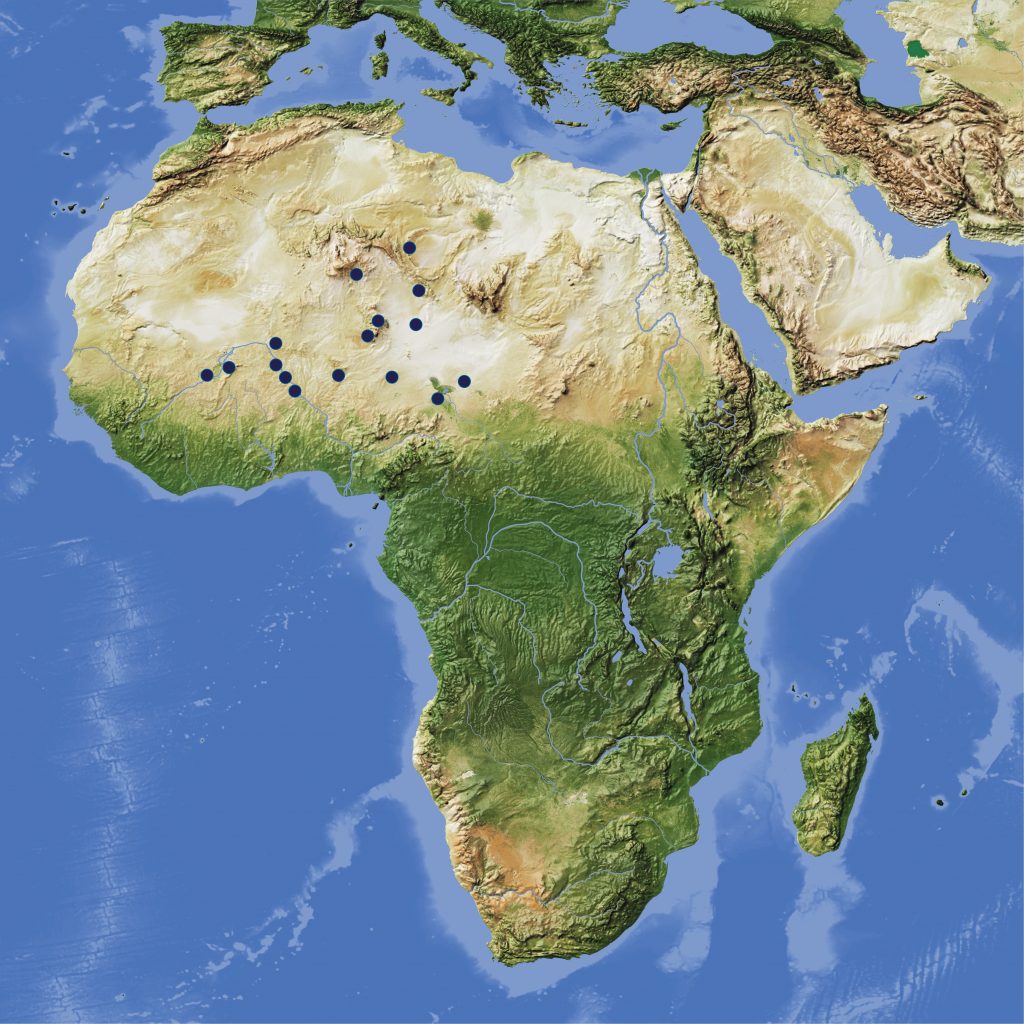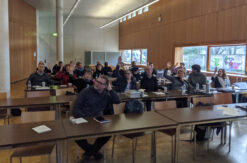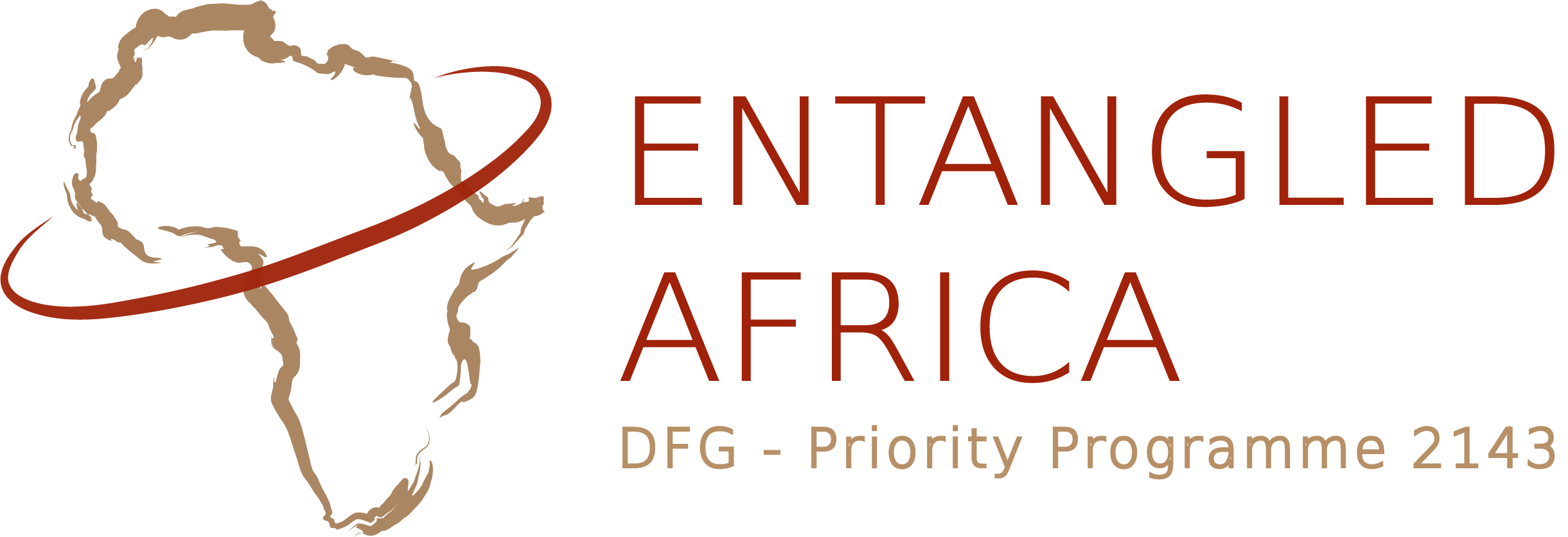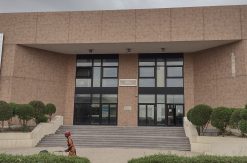Tracing Connections (Magnavita, Sonja)
Chemical analysis of archaeological pottery as indicator of interregional contacts in Western and Saharan Africa before AD 1300

Michael Schmeling, licensed under CC BY 4.0 international, waterbodies © OpenStreetMap contributers, modification by Johanna Sigl
Project description
The main goal of the project is to generate unbiased evidence of interregional contacts between archaeological areas and regions in western and Saharan Africa during the 1st to early 2nd millennia AD by means of comprehensive analyses of the chemical composition of pottery. Thus far, archaeological studies of interregional contacts within Africa have mainly relied on the archaeometric analysis of prestige goods or so-called exotica (e.g., glass beads) to trace such connections in an objective manner. For instance, a number of hitherto examined artifacts appear to corroborate the suggestions from written sources that various major historical places in West Africa and the Sahara – e.g., Gao, Essouk-Tadmekka and Marandet – were once connected to each other through trade routes from/to North Africa. Beyond this, however, we are still poorly informed about the interaction of those places with others in the wider region, either because there are no written sources on such traffic or because exotica are lacking or were not analyzed. The proposed project steps down from the pure analysis of exotica by demonstrating that pottery, as the most frequent artifact class in archaeological sites of the period, is equally fully suitable for tracing connections between sites and areas from adjacent regions. In fact, preliminary work has shown that chemical composition analysis of archaeological pottery is a powerful tool for even highlighting thus far unknown interregional connections.
The project intends to uncover potential interregional interactions within a research area encompassing the Libyan Sahara to the north, the Middle Niger Valley to the west and the Lake Chad Basin to the east. The central objective of the project will be achieved within the scope of three successive research stages that include: 1) empirically determining the chemical “fingerprint” of local-made pottery from different areas and broad geographical regions within the research zone, encompassing the Libyan Central Sahara in the North, the Niger Valley in the West, and the Chad Basin in the East 2) mass-screening chemical composition analysis of pottery from selected 1st and early 2nd millennia AD archaeological sites within the research zone, which are known or thought to have been early involved in long-distance trade; 3) comprehensive and final statistical analysis of the data in order to source the broad geographical origin of non-local pottery identified in Stage 2 by means of the reference dataset established in Stage 1.
Project members

Prof. Dr. Sonja Magnavita
Applicant/Project director
Goethe-University Frankfurt / Institute for Archaeology / African Prehistory
s.magnavita@em.uni-frankfurt.de
Link: https://www.uni-frankfurt.de/94057375/ContentPage_94057375

Juan-Marco Puerta-Schardt
PhD candidate
Goethe-University Frankfurt / Institute for Archaeology / African Prehistory
puerta-schardt@em.uni-frankfurt.de
Posts

Report on SPP Entangled Africa Annual Meeting in Münster
Allgemein EN, P01 Prehistoric Axes EN, P02 Connecting Foodways EN, P03 InterLINK EN, P04 Lake Chad EN, P05 Landscapes EN, P06 DeGreening EN, P07 Routes of Interaction EN, P08 ClimCellMed EN, P09 Borrowed words EN, P10 Congo Basin EN, P11 FDM EN, P12 Coordination, P13 Tracing Connections EN![[Attribution: unknown; Copyright: not defined] D-DAI-KAAK-2024-JS-0063-PlanetAfrica_Eroeffnung_BER](https://www.dainst.blog/entangled-africa/wp-content/uploads/sites/11/2024/12/D-DAI-KAAK-2024-JS-0063-PlanetAfrica_Eroeffnung_BER-scaled-e1734001679313-247x163.jpg)
“Planet Africa” in the James Simon Gallery: Exhibition Opening and Press Reviews
Allgemein EN, P01 Prehistoric Axes EN, P02 Connecting Foodways EN, P03 InterLINK EN, P04 Lake Chad EN, P05 Landscapes EN, P06 DeGreening EN, P07 Routes of Interaction EN, P08 ClimCellMed EN, P09 Borrowed words EN, P10 Congo Basin EN, P11 FDM EN, P12 Coordination, P13 Tracing Connections EN
SPP Annual Meeting 2024 in Cologne
Allgemein EN, P01 Prehistoric Axes EN, P02 Connecting Foodways EN, P03 InterLINK EN, P04 Lake Chad EN, P05 Landscapes EN, P06 DeGreening EN, P07 Routes of Interaction EN, P08 ClimCellMed EN, P09 Borrowed words EN, P10 Congo Basin EN, P11 FDM EN, P12 Coordination, P13 Tracing Connections EN![[Attribution: ; Copyright: ] KAAK-SPP2143-TN-2023_Jahrestagung_Frankfurt_01-2022-8](https://www.dainst.blog/entangled-africa/wp-content/uploads/sites/11/2023/01/KAAK-SPP2143-TN-2023_Jahrestagung_Frankfurt_01-2022-8-247x163.jpg)
SPP Annual Meeting at the Goethe-University Frankfurt from 16th to 17th January
Allgemein EN, P01 Prehistoric Axes EN, P02 Connecting Foodways EN, P03 InterLINK EN, P04 Lake Chad EN, P05 Landscapes EN, P06 DeGreening EN, P07 Routes of Interaction EN, P08 ClimCellMed EN, P09 Borrowed words EN, P10 Congo Basin EN, P11 FDM EN, P12 Coordination, P13 Tracing Connections EN![[Attribution: J. Sigl; Copyright: Entangled Africa, KAAK] 2022-01-10_Teilnehmende07](https://www.dainst.blog/entangled-africa/wp-content/uploads/sites/11/2022/01/2022-01-10_Teilnehmende07-247x163.jpg)

![[Attribution: unknown; Copyright: not defined] safa_logo](https://www.dainst.blog/entangled-africa/wp-content/uploads/sites/11/2023/07/safa_logo-247x163.png)
![[Attribution: ; Copyright: ] Screenshot 2023-01-19 091612](https://www.dainst.blog/entangled-africa/wp-content/uploads/sites/11/2023/01/Screenshot-2023-01-19-091612-247x163.png)
